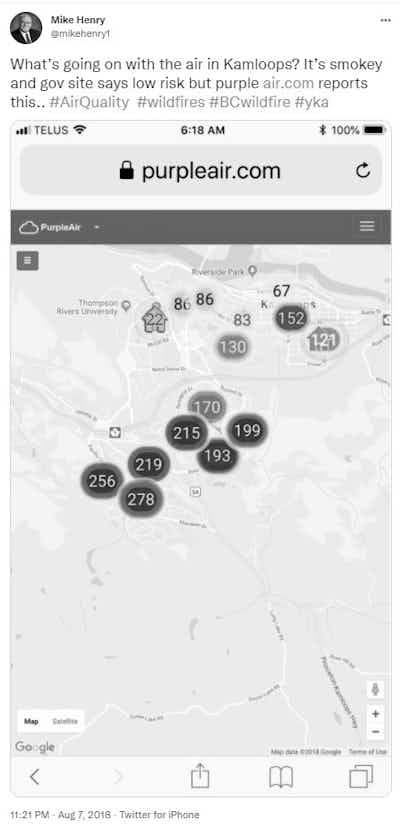It’s now common knowledge that social media has changed our world.
Some would argue for the better, others would argue for the worse. The real answer may actually be that ‘it depends on what we are using it for’.
Poor air quality occurs for a variety of different reasons but it boils down to man-made or caused by natural events. Both types can harm humans and cause a considerable amount of public health issues.
Social media hasn’t changed the outcome of these events by and large but it has changed the way we prepare ourselves for them. It’s also helping us be aware of and analyse imminent health risks right outside our front doors.
Our innate need to be part of the conversation
It’s no secret that as humans we have a tendency to broadcast our lives on social media when something affects us in a positive or negative way.
The behaviour for how we handle visually poor air quality or even a bad smell lurking around the neighbourhood is no different to anything else. We go straight to our nearest device and post it immediately on Twitter or Facebook with the hope that everyone in our network sees it.

However, the deeper truth is that most of us like to be a part of conversations in which we feel we have something to add, based on first-hand experience.
A large part of this is our innate need to know that our concerns are shared and validated by others - specifically those who may be living in the same area and observing the same event that we might be.
The other major reason we post about air quality on social media is because we now see it as a legitimate tool to use to take action. Social media platforms have now become the places to meet friends - our community town hall and megaphone in one.
In today’s media climate, all it takes is a few users to post images with their concerns and there is ground for a fast story at a local news channel that generates attention.
This certainly has become a quick shortcut to get the attention of city authorities.

An observation of visually poor air quality from the 2017 British Colombia Wildfires shared on social media
However, as much attention and shared concerns as an air quality event creates, it doesn’t answer the most important question quickly enough to the people that need to know first.
‘How much harm have I been exposed to and when will it be safe to go outside?’
Transparent air quality data has now become an expectation
Although it’s not defined as an ‘orthodox’ social media platform, Purple Air’s air quality map is exactly that. It’s a giant social experiment where people can share information about themselves - just like Facebook.
The difference is that instead of commenting on the political climate or latest fashion trends users share their local air quality data with others. All this is done with very little effort, at a low cost and only requires an internet connection.
After an easy installation, the sensor transmits data to the cloud and displays the data collected on a large interactive map that anyone can access.

An image of a low-cost purple air sensor
The ultimate goal of Purple Air’s air quality map is to provide as clear a picture of local air quality data (PM 2.5, PM 10) as possible without spending a significant amount of time and money on deploying hardware.
Every time a user installs a sensor they get a clear picture of their local air quality, and the rest of the world gets another small piece of the air quality puzzle. This effectively creates a win-win situation for both parties.
Purple Air now visualises data from thousands of sensors around the world. The amount of participation is certainly exciting but what’s more impressive is the ability it has to become the center of conversations on social media.
10 years ago members of the general public may not have known about particulate matter and only equated the term ‘air quality’ with images of icebergs melting in the North Pole.
Today’s public conversation has become much more educated and focused on community health. A good example of this was around the catastrophic event in Northern California caused by wildfires, and the hazardous air quality that went with it. Instead of merely sharing visual observations users were able to see exactly what was going on around them with their local air quality at a granular level.

An example of shared Purple Air data on Twitter showing high PM readings caused by the Wildfires
As technological capability grows and hardware becomes even cheaper, air quality on social media will certainly be an exciting space to watch. It will be interesting to see how far we can go with the idea of sharing our observations for global benefit.
We can only hope that better data, more educated conversations and faster responses will help us all live a better life with cleaner air, to prepare for and respond to natural and man-made disasters and also allow essential industries to make any necessary adjustments to limit impacts and remain operational.
.jfif?auto=format,compress&cs=tinysrgb&fit=crop&crop=focalpoint&fp-x=0.50&fp-y=0.50&fp-y=0.1&w=400&h=280&q=25&blur=5&sat=-100)